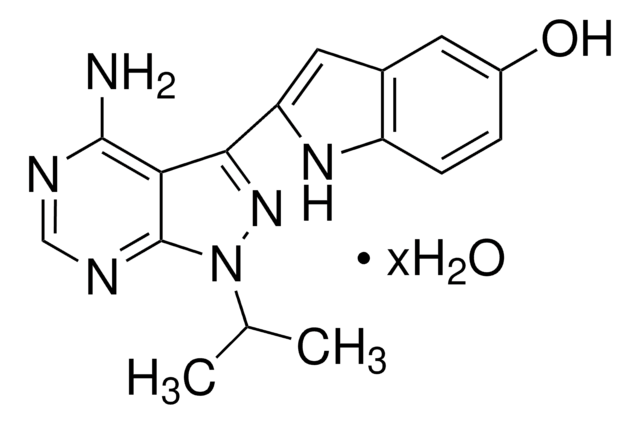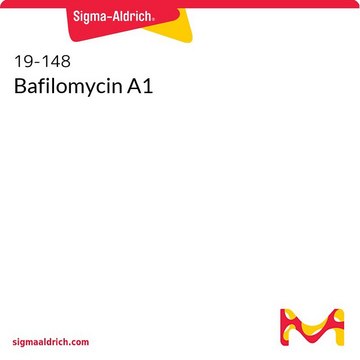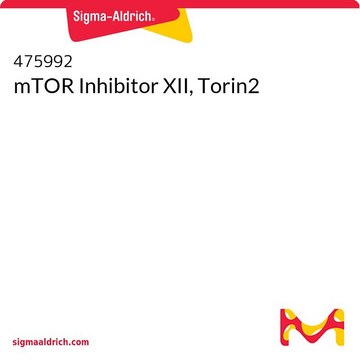475988
mTOR Inhibitor III, PP242
The mTOR Inhibitor III, PP242 controls the biological activity of mTOR. This small molecule/inhibitor is primarily used for Phosphorylation & Dephosphorylation applications.
Synonim(y):
mTOR Inhibitor III, PP242, 2-(4-Amino-1-isopropyl-1H-pyrazolo[3,4-d]pyrimidin-3-yl)-1H-indol-5-ol, Dihydrate, TORKinib, mTOR Inhibitor III, PP242
About This Item
Polecane produkty
Poziom jakości
Próba
≥97% (HPLC)
Formularz
solid
producent / nazwa handlowa
Calbiochem®
warunki przechowywania
OK to freeze
protect from light
kolor
off-white
rozpuszczalność
DMSO: 100 mg/mL
Warunki transportu
wet ice
temp. przechowywania
−20°C
Opis ogólny
Opakowanie
Ostrzeżenie
Inne uwagi
Apsel, B., et al. 2008. Nat. Chem. Biol.4, 691.
Informacje prawne
Kod klasy składowania
11 - Combustible Solids
Klasa zagrożenia wodnego (WGK)
WGK 2
Temperatura zapłonu (°F)
Not applicable
Temperatura zapłonu (°C)
Not applicable
Certyfikaty analizy (CoA)
Poszukaj Certyfikaty analizy (CoA), wpisując numer partii/serii produktów. Numery serii i partii można znaleźć na etykiecie produktu po słowach „seria” lub „partia”.
Masz już ten produkt?
Dokumenty związane z niedawno zakupionymi produktami zostały zamieszczone w Bibliotece dokumentów.
Nasz zespół naukowców ma doświadczenie we wszystkich obszarach badań, w tym w naukach przyrodniczych, materiałoznawstwie, syntezie chemicznej, chromatografii, analityce i wielu innych dziedzinach.
Skontaktuj się z zespołem ds. pomocy technicznej







